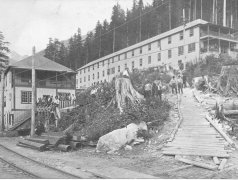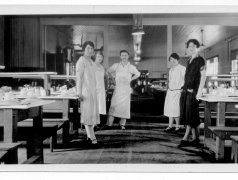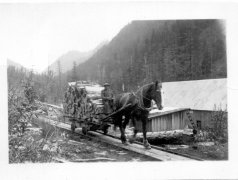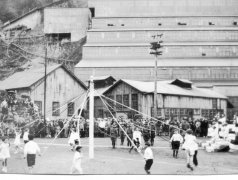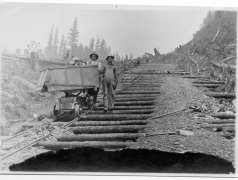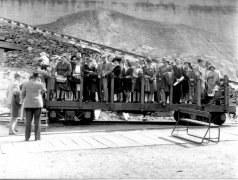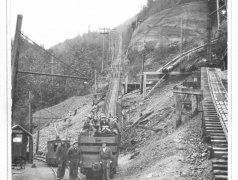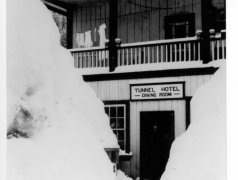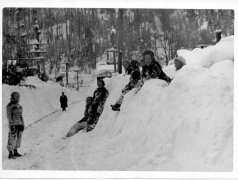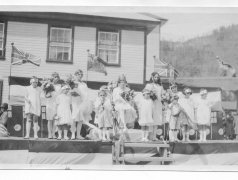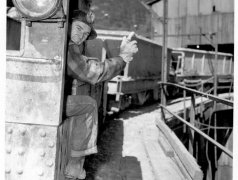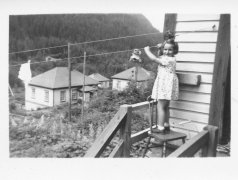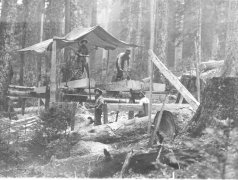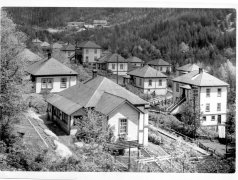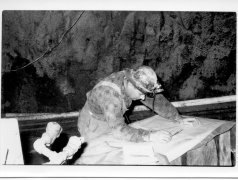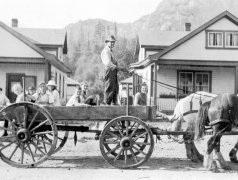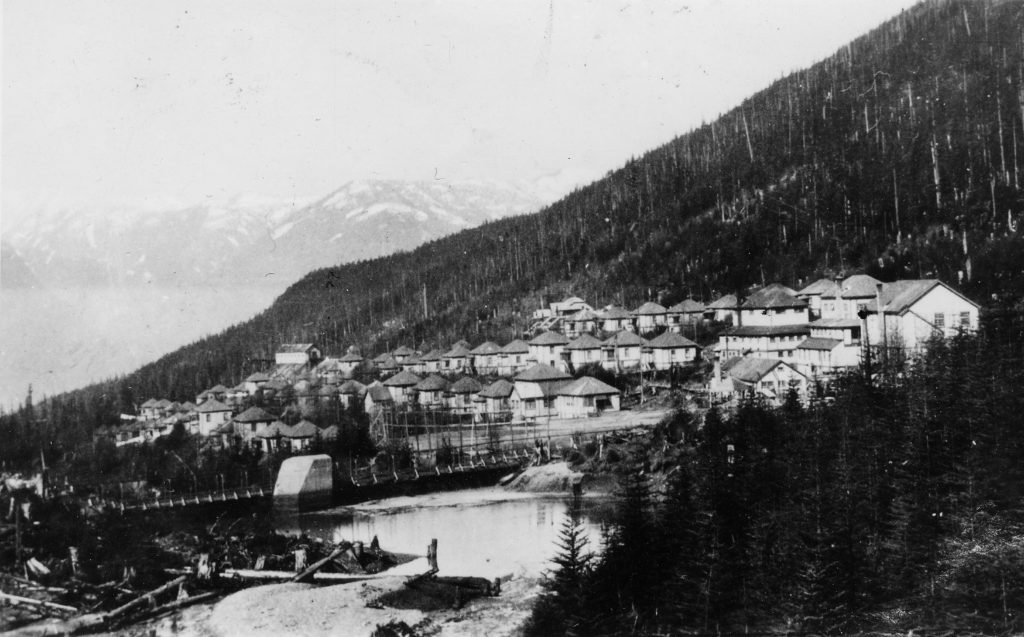
Travelling north on the Sea to Sky Highway, you know you are getting close to the turnoff for the Copper Ridge Conference Centre when the Mining Museum appears on the right. A visit to this National Historic Site gives a glimpse into the fascinating life of Britannia Mine (1904-1974).
Britannia Mining and Smelting Company played an important part in Canadian mining history. Over the course of 70 years more than 60,000 miners from 50 different nationalities worked there.
There were two towns and various smaller camps that serviced the mine. In the 1920’s and 1930’s, Britannia Mine was the largest copper producer in the British Commonwealth, producing 17% of the world’s copper.
Continuing up Copper Drive toward the Conference Centre, it is hard to believe that nestled in the steep valley above the town of Britannia Beach at a height of 600 m. was another town, Mt Sheer, fondly known as “the Townsite” by the locals.
Most visitors passing through Britannia Beach had no idea that this upper town site, where the miners and their families lived and where the miners entered the mine shaft, even existed.
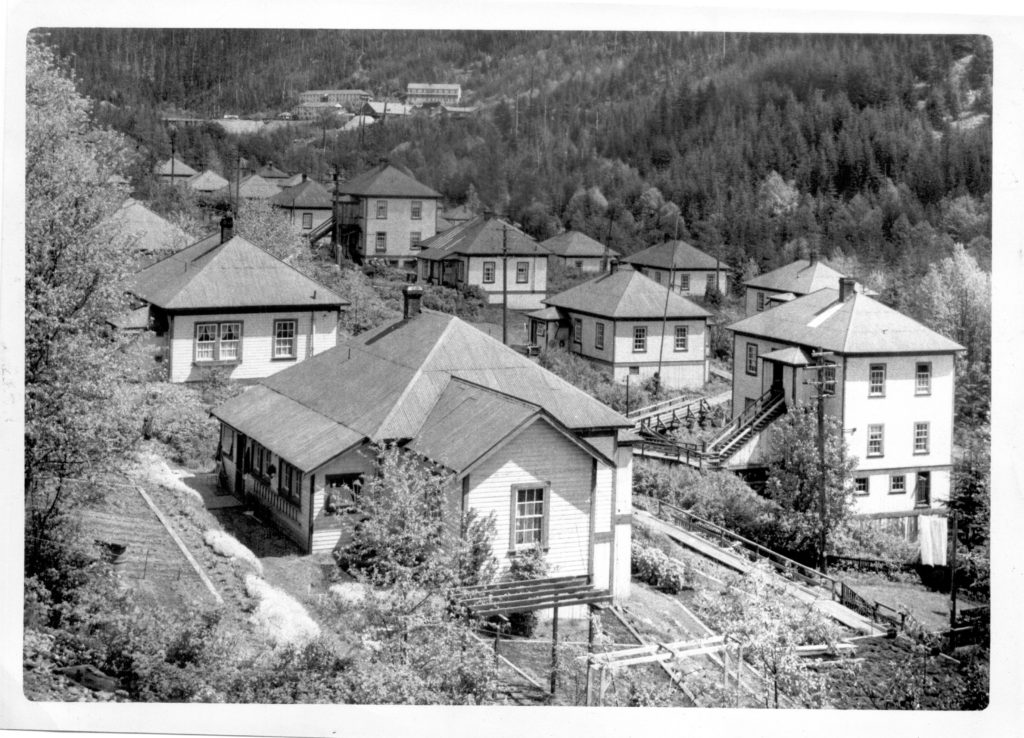
In 1940, Mt Sheer had a population of 1200. There were three bunkhouses, a cookhouse, a hotel, and 200 families.
It was a fully functioning town with an outdoor swimming pool, a recreation center, a theater, a high school and a hospital.
Mt Sheer townsite was unique, nestled as it was deep into the valley and surrounded by steep mountains whose shadows made for harsh and sunless winters. One year ten meters of snow was recorded!
In the early days, everything was brought in by pack horses. In 1914, an incline railway was built. It became known as “The Skip.”

The Skip was the lifeline between the Upper Townsite (Mt Sheer) and “The Beach.” When new families arrived by boat, they would have to carry their baggage through The Beach and up 347 steps to get onto the Skip.
This railway travelled 7.5 mph at a thirty degree angle up the mountainside, the 30 minute trip allowing newcomers to catch up on the news about local goings on. Travellers then boarded a narrow gauge railway into the townsite which took another thirty minutes. Those railway tracks were the main street of the town. The Skip was terminated when a road was built in 1953.
In 1958 the highway linking Vancouver to Britannia Beach and Squamish was constructed. With the construction of the road and the mine closure that same year, the town was abandoned and the buildings were destroyed in the 1960s.
What was it like to live in Mt Sheer those early days? Community life was very important in an isolated company town. It was needed in order to keep the miners and their families happy so they would stay to work.
The company manager, C.P. Browning, sponsored company parties and encouraged the community to form their own clubs. This also encouraged intense competition between the two townsites.
The most enduring of all the Britannia traditions was the crowning of the Copper Queen. The first of these celebrations was held on May 24, 1925, and the last in May 1966. This celebration brought all of the mining community together. The queen was selected by the school students with a grand ceremony while the children danced around the Maypole. The crown, made out of copper from the mine, can be seen in the Museum today.
Sue Shives
